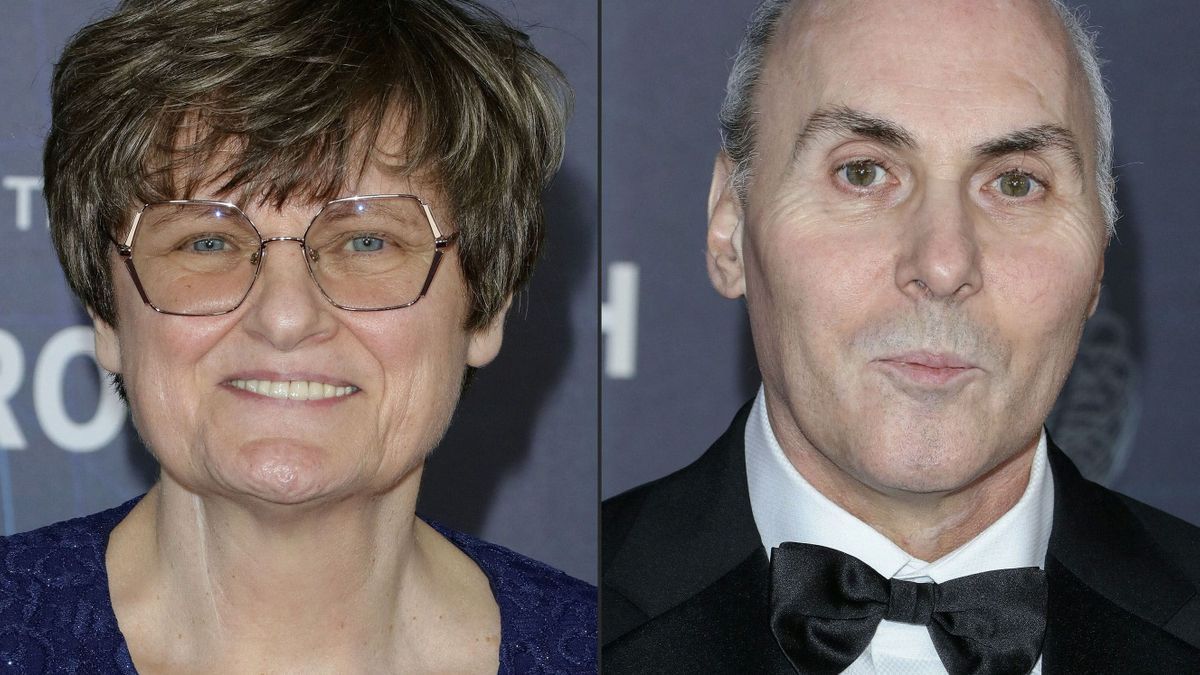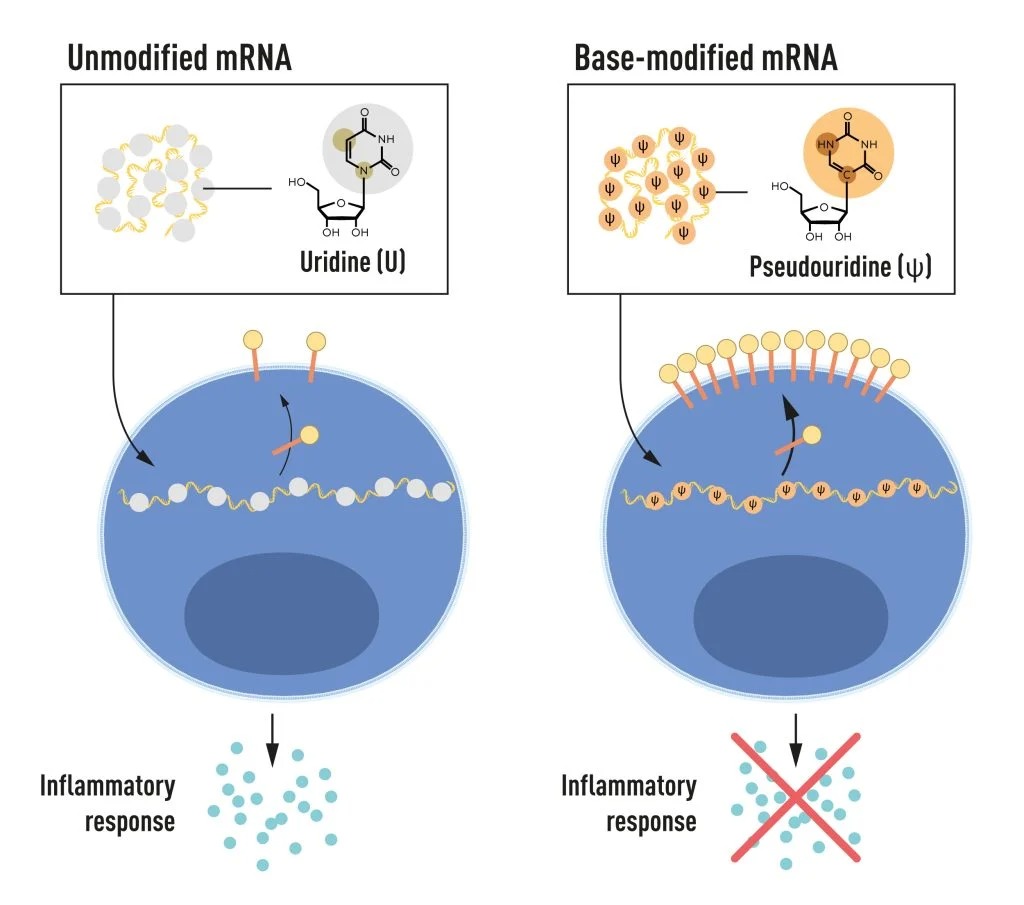
The Nobel Prize in Medicine recognized on Monday the work of Hungarian researcher Katalin Kariko and her American colleague Drew Weissman in the development of messenger RNA vaccines, decisive in the fight against Covid-19.
The two scientists, cited among the big favorites, were distinguished “for their discoveries concerning the modifications of the nucleic bases which allowed the development of effective mRNA vaccines against Covid-19“, announced the jury.
Messenger RNA vaccines to respond to the Covid-19 pandemic
“Recipients have contributed to the development at an unprecedented pace of vaccines in response to one of the greatest threats to human health in modern times“, he added.
In March 2020, the World Health Organization (WHO) described Covid-19 as a “pandemic”. In December of that same year, messenger RNA vaccines received marketing authorization. Billions of doses have since been injected around the world.
Biochemist Katalin Kariko and immunologist Drew Weissman, long-time colleagues at the University of Pennsylvania (United States) aged 68 and 64 respectively, have already won several prestigious awards for their research, including the Lasker Award in 2021, often considered a precursor to the Nobel.
By rewarding the duo, the Nobel committee is breaking from its usual practice of distinguishing research dating back several decades.
Their decisive discoveries date back to 2005 but a particular breakthrough in 2015 will be crucial, a little over four years later, for the manufacture of the first messenger ribonucleic acid (mRNA) vaccines against Covid-19 by the Pfizer/BioNTech and Moderna laboratories. .
In the midst of a pandemic, many people have become familiar with the principle of these vaccines: they focus on a small part of the virus — in the case of SARS-CoV-2, the so-called “Spike” protein — and aim to inject into the body strands of genetic instructions, called messenger RNA, instructing the body to make this protein.
Harmless in itself, this “spike” of the coronavirus is then detected by the immune system which will produce antibodies.
Thirteenth distinguished woman
For Katalin Kariko, the thirteenth woman to win the Nobel Prize in Medicine, this distinction recognizes long years of research spent in the shadows, without recognition from her peers.
She said she thought of her mother when the award was announced.
“Already ten years ago, she listened to (the announcements of the Nobel committee), when I was not even a professor yet. She told me +maybe your name will be mentioned, I will listen when they make this announcement+” she told Swedish public radio SR. “Year after year, she listened. Sadly, she died five years ago at the age of 89. Maybe she listened from the sky“.
Drew Weissman, for his part, initially believed it was a hoax when his colleague, “Kati”, told him the news by phone. “We were wondering if someone was playing a prank on us“, he told AFP.
BREAKING NEWS
The 2023 #NobelPrize in Physiology or Medicine has been awarded to Katalin Karikó and Drew Weissman for their discoveries concerning nucleoside base modifications that enabled the development of effective mRNA vaccines against COVID-19. pic.twitter.com/Y62uJDlNMj— The Nobel Prize (@NobelPrize) October 2, 2023
“I’m sure every scientist in the world is thinking about it: it’s the ultimate prize, impossible to obtain“, he added. “Over the past 30-35 years as a scientist, I never imagined that I would be considered for a Nobel Prize“.
Succeed in reducing inflammatory reactions
Ms. Kariko spent much of her time in the 1990s applying for funding for her research focused on messenger ribonucleic acid, molecules that give cells instructions for use so that she could win the Nobel Prize in Medicine. advances in the messenger RNA vaccine against Covid produce beneficial proteins for our body.
The biochemist believed that messenger RNA could play a key role in the treatment of certain diseases, for example by healing brain tissue after a stroke. But messenger RNA was not without problems: it provoked strong inflammatory reactions, being considered as an intruder by the immune system.
With her research partner Weissman, Katalin Kariko gradually manages to introduce tiny modifications into the structure of RNA, making it more acceptable to the immune system.

They are reaching a new level, by succeeding in placing their precious RNA in “lipid nanoparticles”, a coating which prevents it from degrading too quickly and facilitates its entry into cells. Their results are made public in 2015.
For the winners of the 2023 vintage, the check will be for eleven million crowns (920,000 euros), the highest nominal value (in Swedish currency) in the more than century-old history of the Nobels. The Nobel Foundation announced in mid-September that it had increased the amount of this endowment thanks to its improved financial situation.
Today, mRNA vaccines are being tested in other promising indications. Discover our articles to find out more:
- Pancreatic cancer: an mRNA vaccine gives hope – May 2023
- Covid-19: Will the book “Sorcerers’ Apprentices” open the scientific debate? – March 2023
- Cancer: an RNA vaccine demonstrates its effectiveness against melanoma – December 2022
- An RNA vaccine against cancer ready in a few months? Merck and Moderna announce it – October 2022
- Pancreatic cancer: mRNA vaccine offers new hope – June 2022
- Vaccination: “messenger RNA will not replace all vaccines” – April 2022
- HIV vaccine: Moderna tests a messenger RNA vaccine in humans – January 2022
- Covid-19: Katalin Kariko, the researcher behind messenger RNA vaccines – December 2020
